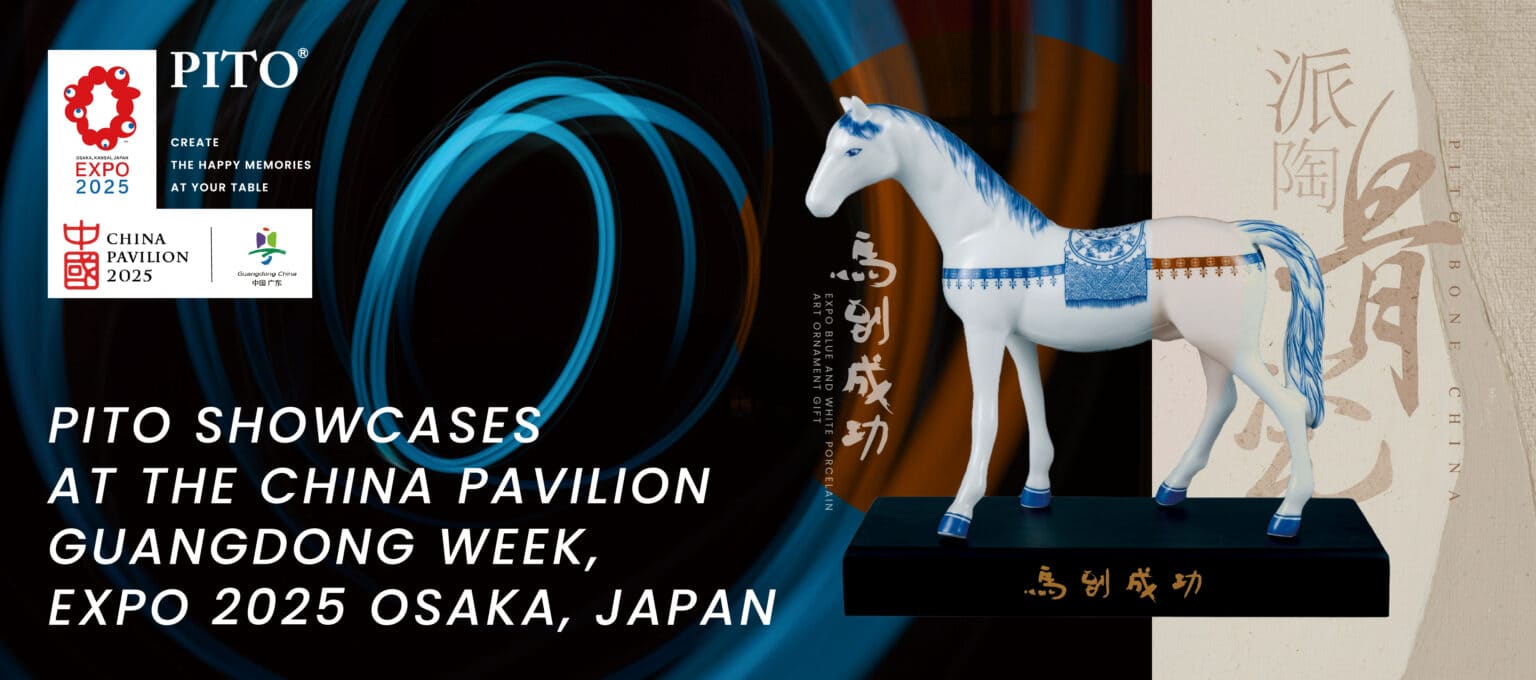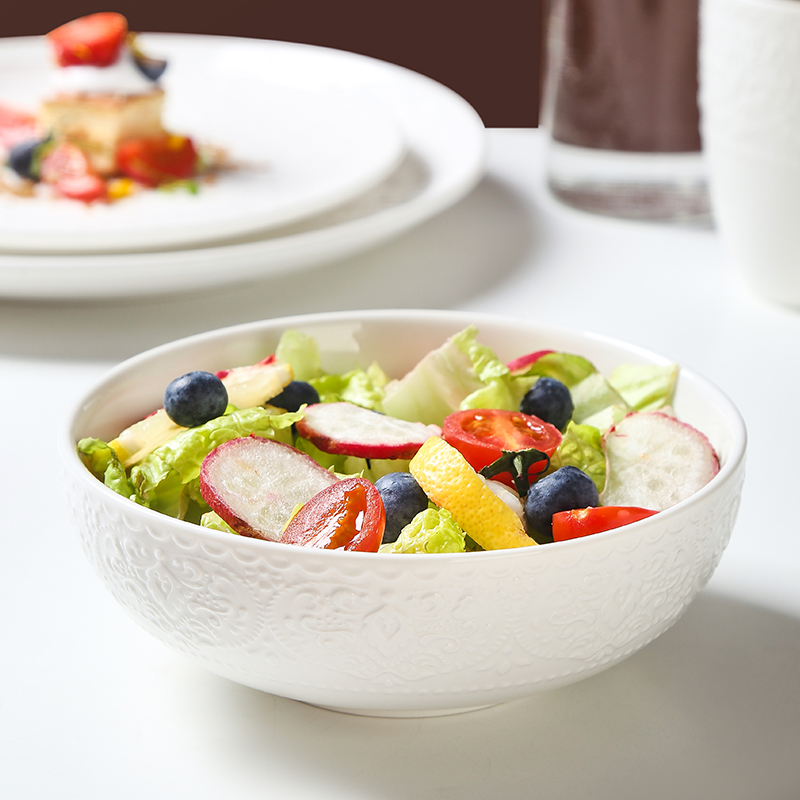
Bowls desempenham um papel crucial na indústria de hotéis e restaurantes, muito além de seu propósito aparentemente utilitário. Esses vasos humildes têm o poder de Elevar a experiência gastronômica para os hóspedes e contribuir para o ambiente geral e a apresentação de uma refeição. De tigelas de sopa a saladas, tigelas de massas para tigelas de sobremesa, Cada tipo de tigela serve uma função específica, e escolher o certo pode causar um impacto significativo sobre como os pratos são apreciados.
Neste guia completo, Vamos explorar o mundo fascinante de Diferentes tipos de tigelas encontradas em hotéis e restaurantes, lançando luz sobre suas características, funções, e como eles aprimoram a experiência gastronômica. Prepare -se para aprender tudo sobre as tigelas que enfeitam as mesas dos clientes discernindo e elevar suas aventuras culinárias a novas alturas.
Tigelas por diferentes materiais
Quando se trata de tigelas de hotel e restaurante, A escolha dos materiais é crítica, pois afeta tanto a apresentação quanto a praticidade da experiência gastronômica. Vamos explorar os vários materiais usados na fabricação dessas tigelas, entender suas características e benefícios, e veja como a escolha do material pode afetar a experiência geral de refeições.
A. Tigelas de cerâmica
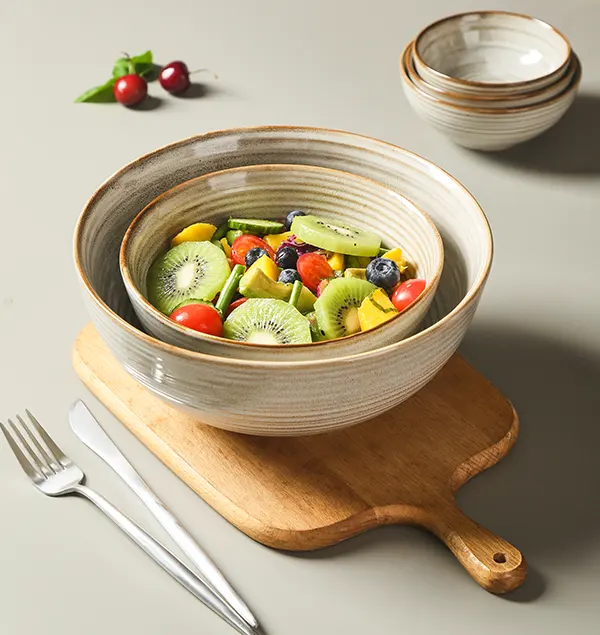
Tigelas de cerâmica são populares para o seu Elegância e versatilidade. Eles vêm em uma variedade de cores, padrões, e estilos, permitindo diversas opções de apresentação. Tigelas de cerâmica têm excelentes propriedades de retenção de calor, Mantendo sopas, ensopados, e outros pratos quentes quentes por períodos mais longos. Eles também são microondas e seguros de forno, tornando -os convenientes para reaquecer ou assar certos pratos. As tigelas de cerâmica são relativamente frágeis e requerem manuseio cuidadoso para evitar quebras.
B. Tigelas de vidro
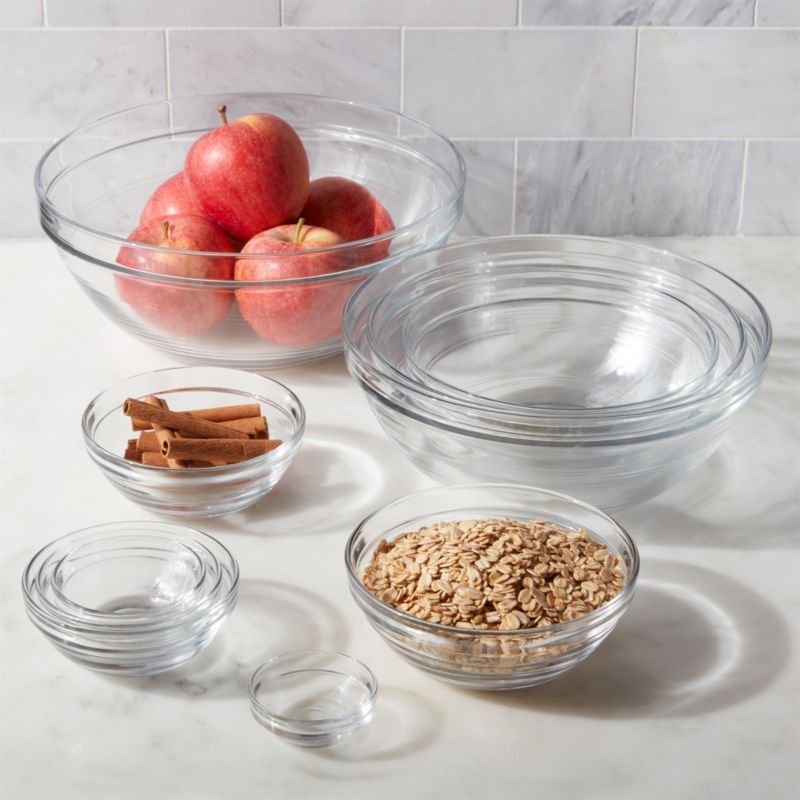
fonte: Pinterest
Tigelas de vidro oferecem um Apresentação transparente e elegante, permitindo que o conteúdo da tigela seja exibido atraente. Eles são resistentes a manchas e não absorvem sabores ou odores, tornando -os ideais para servir uma ampla variedade de pratos. Tigelas de vidro são microondas e lavadores de lavar louça, tornando -os convenientes para aquecimento e limpeza fácil. No entanto, As tigelas de vidro são mais suscetíveis à quebra do que outros materiais, e cautela deve ser exercido ao manusear e armazená -los.
C. Tigelas de aço inoxidável
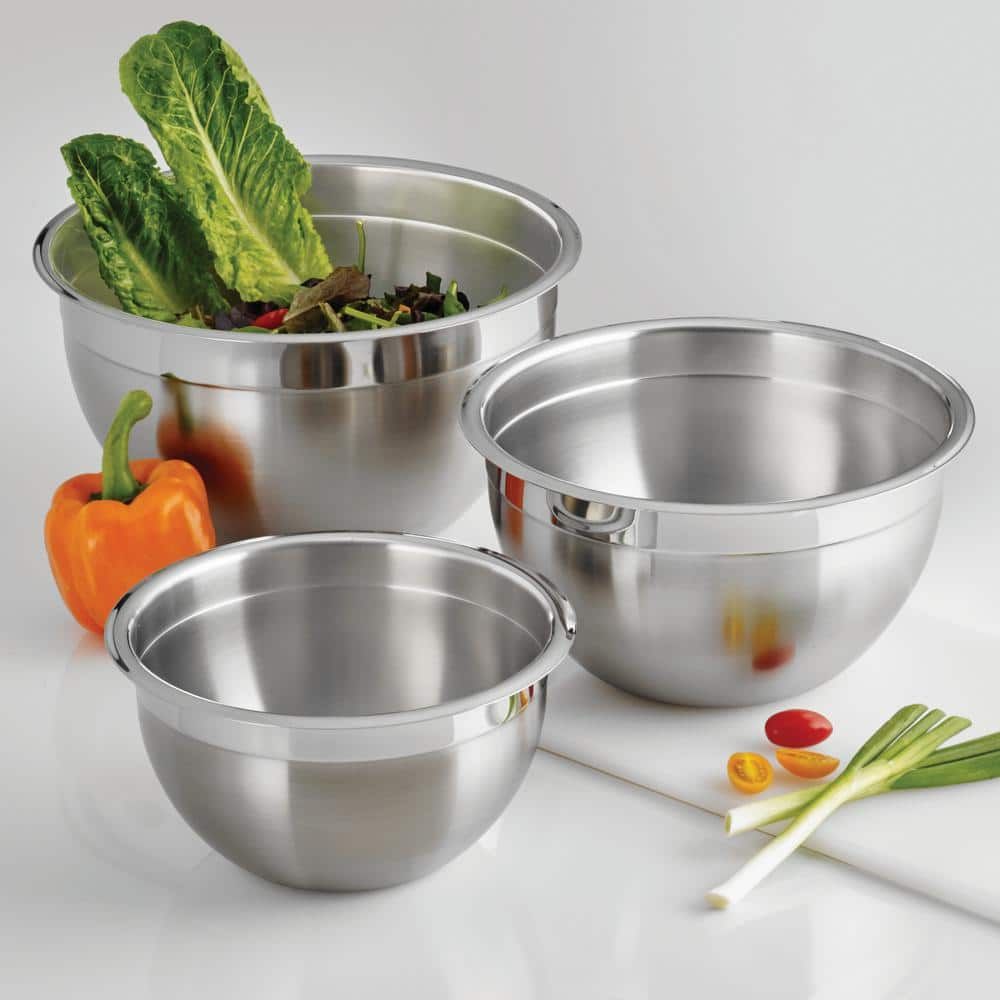
fonte: Pinterest
Tigelas de aço inoxidável são altamente durável e resistente à ferrugem, manchas, e corrosão, tornando-os adequados para uso comercial de alto volume. Eles oferecem uma aparência moderna e elegante, Adicionando um toque de sofisticação à apresentação de vários pratos. Tigelas de aço inoxidável têm excelente condutividade térmica, permitindo aquecimento rápido ou resfriamento de ingredientes. Eles são fáceis de limpar, Safe da lava-louças, e é menos provável que quebre ou chip, tornando -os uma escolha prática para ambientes de cozinha movimentados.
D. Tigelas de melamina
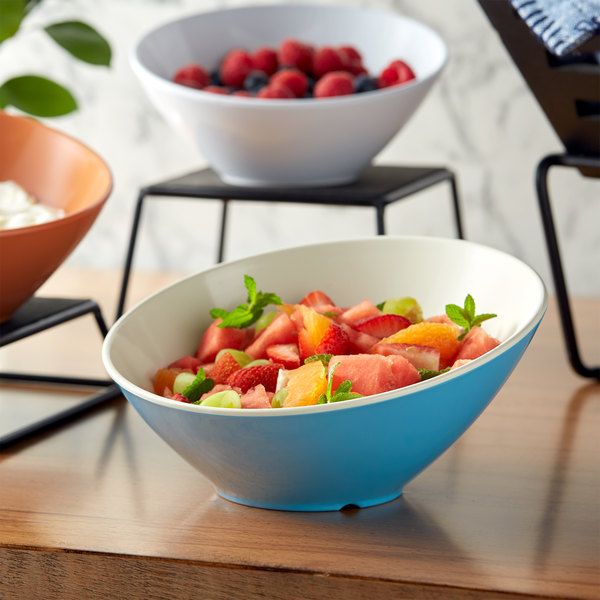
fonte: Pinterest
As tigelas de melamina são leve, durável, e resistente à quebra, tornando -os ideais para configurações de jantar ao ar livre ou casual. Eles estão disponíveis em uma ampla gama de cores e padrões, Adicionando vibração à apresentação de pratos. As tigelas de melamina têm boa resistência ao calor, mas não devem ser usadas em microondas ou fornos. Eles são lavadores de lavar louça, Fazendo limpeza sem complicações.
A escolha do material para tigelas de hotel e restaurante é crucial, pois afeta diretamente a apresentação e a praticidade dos pratos servidos. Deve -se considerar as necessidades e requisitos específicos do estabelecimento ao selecionar o material apropriado, Garantir que aumente a experiência gastronômica geral enquanto atende às demandas da cozinha e convidados.
Tigelas por diferentes funções
Tigelas servem uma variedade de funções em ambientes de hotéis e restaurantes, atendendo a diferentes necessidades culinárias e aprimorando a experiência gastronômica para os hóspedes. De servir sopas e saladas a apresentar pratos e sobremesas de macarrão, As tigelas desempenham um papel crucial nos aspectos práticos e na apresentação estética das refeições. Esta seção explora como as tigelas são categorizadas com base em suas funções, destacando as características e projetos específicos que os tornam adequados para fins pretendidos.
A. tigelas de sopa
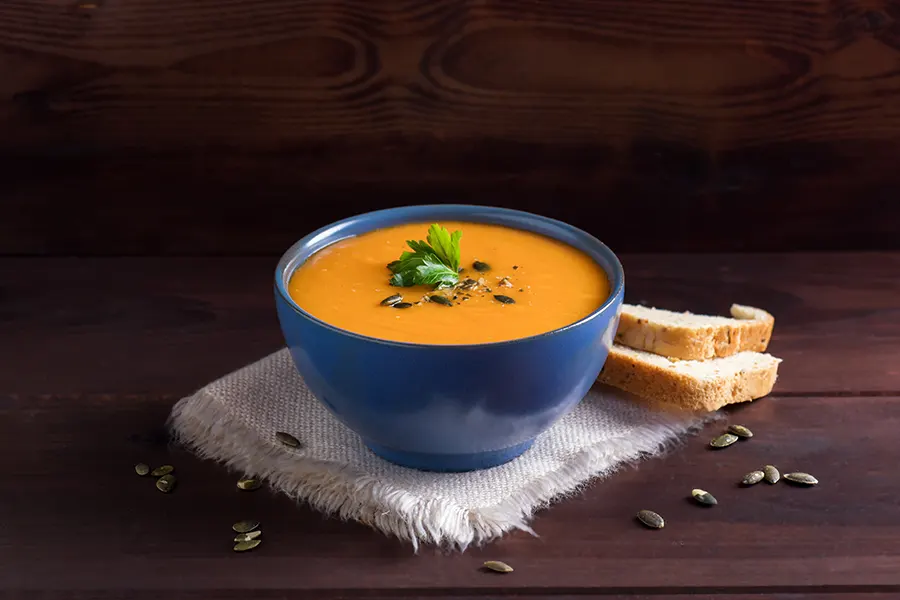
Tigelas de sopa são projetados especificamente para aprimorar o prazer de pratos de sopa quentes. Eles possuem características e recursos únicos que os tornam adequados para esse fim. Vamos nos aprofundar nas qualidades distintas de tigelas de sopa que as tornam ideais para servir sopas reconfortantes.
Características e recursos:
- Capacidade: Tigelas de sopa normalmente têm uma capacidade maior em comparação com outros tipos de tigelas. Isso permite porções generosas de sopa, incluindo caldo, vegetais, carnes, e macarrão.
- Forma: As tigelas de sopa geralmente têm uma forma arredondada com uma abertura mais ampla e lados profundos. Este design ajuda a conter o líquido e os ingredientes, prevenir o derramamento enquanto facilita a degrau ou saboreia a sopa.
- Isolamento: As tigelas de sopa geralmente apresentam materiais que fornecem isolamento para manter a sopa quente por períodos mais longos. Isso permite que os hóspedes saboreem a sopa no ritmo desejado sem que ela perca seu calor reconfortante.
- Desenhos: As tigelas de sopa vêm em vários designs para se adequar a diferentes estéticas para refeições. Do clássico e elegante ao contemporâneo e vibrante padrões, Esses projetos adicionam apelo visual enquanto complementam a apresentação da sopa.
Tigelas de sopa desempenham um papel vital na apresentação e servir sopas em hotéis e restaurantes. Sua capacidade maior, lados profundos, e materiais isolados garantem que a sopa permaneça quente e visualmente atraente. Seja um ensopado saudável, Um delicado consumido, ou um ramen saboroso, As tigelas de sopa contribuem para melhorar a experiência gastronômica geral e oferecer um começo reconfortante para uma refeição.
B. Salada tigelas
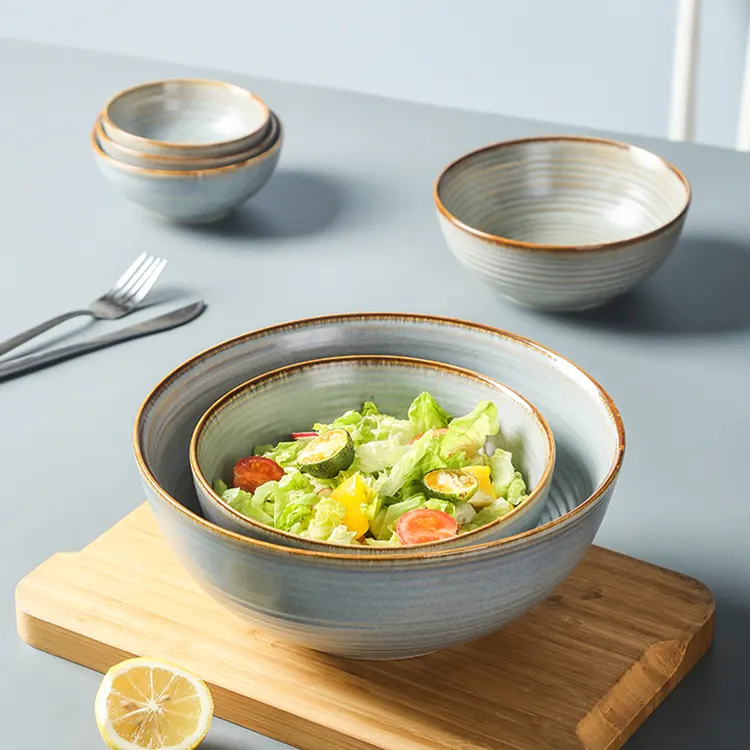
Salada tigelas Sirva o objetivo específico de apresentar e servir saladas frescas e vibrantes. Eles são projetados com recursos que aprimoram a aparência, lançabilidade, e praticidade de saladas. Vamos explorar os elementos de propósito e design das tigelas de salada, junto com o tamanho ideal, forma, e material para servir saladas.
Projetos e recursos de design:
- Tamanho: As tigelas de salada geralmente são maiores que outras tigelas para acomodar porções generosas de verduras, vegetais, frutas, e coberturas. O tamanho permite fácil misturar e jogar ingredientes sem derramar ou superlotação.
- Forma: Tigelas de salada normalmente têm uma forma larga e superficial. Isso ajuda a distribuir uniformemente curativos e coberturas por toda a salada, garantir que cada mordida consista em uma variedade de sabores e texturas.
- Material: As tigelas de salada são comumente feitas de materiais como cerâmica, vidro, ou melamina. Esses materiais não interferem na frescura e sabores dos ingredientes. Eles também oferecem durabilidade e a capacidade de mostrar as cores vibrantes da salada.
- Projeto: Tigelas de salada geralmente apresentam aros largos ou bordas alargadas, o que torna conveniente jogar e servir a salada. Algumas tigelas de salada também podem vir com utensílios correspondentes ou compartimentos embutidos para molhos ou coberturas, Adicionando conveniência e eficiência ao processo de queriores à salada.
A tigela de salada ideal deve ter um interior espaçoso, uma forma rasa, e ser feito de um material que preserva a frescura e a apresentação da salada. Seu design deve promover a facilidade de misturar, jogando, e servindo, proporcionando uma deliciosa experiência gastronômica para os hóspedes.
C. tigelas de macarrão
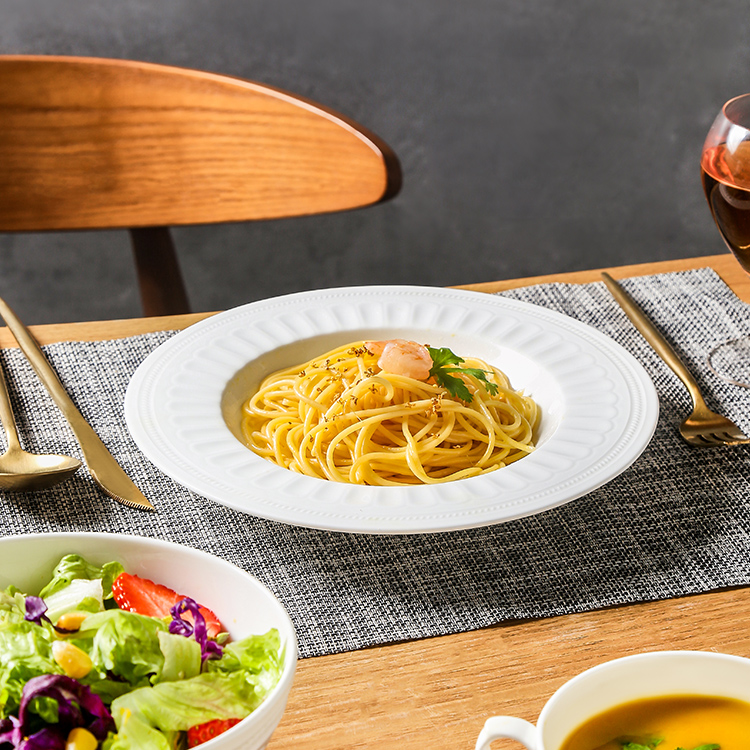
Tigelas de macarrão são projetados especificamente para melhorar o prazer de pratos de macarrão. Eles possuem características e projetos específicos que atendem às necessidades exclusivas da apresentação e consumo de massas. Vamos explorar os recursos e desenhos específicos de tigelas de massas.
Características e recursos:
- Forma: Tigelas de macarrão normalmente têm uma forma larga e superficial, permitindo a distribuição ideal de macarrão e molho. A ampla área de superfície também permite que os hóspedes apreciem o apelo visual do prato.
- Tamanho: As tigelas de macarrão são maiores que as tigelas padrão para acomodar uma quantidade suficiente de macarrão junto com qualquer molho que o acompanha, coberturas, ou enfeites. Eles oferecem amplo espaço para misturar a massa com o molho sem derramamento.
- Design de aro: Muitas tigelas de macarrão apresentam uma borda levemente elevada ou curva. Este design ajuda a conter o molho e impede que ele flua sobre as bordas, garantir que o prato permaneça visualmente agradável e fácil de comer.
- Material: Tigelas de macarrão são comumente feitas de materiais duráveis, como cerâmica ou porcelana. Esses materiais mantêm bem o calor, Mantendo o macarrão quente durante a refeição. Adicionalmente, Eles oferecem um cenário elegante para mostrar as cores e texturas da massa.
As tigelas de macarrão são adaptadas para melhorar a experiência de saborear pratos de macarrão. Seu design largo e superficial, junto com o tamanho e o material apropriados, Permite a apresentação e desfrute ideais de refeições à base de massas. De espaguete tradicional a lasanha saudável, Tigelas de massas fornecem uma embarcação elegante e prática para elevar a experiência gastronômica.
D. Tigelas de arroz
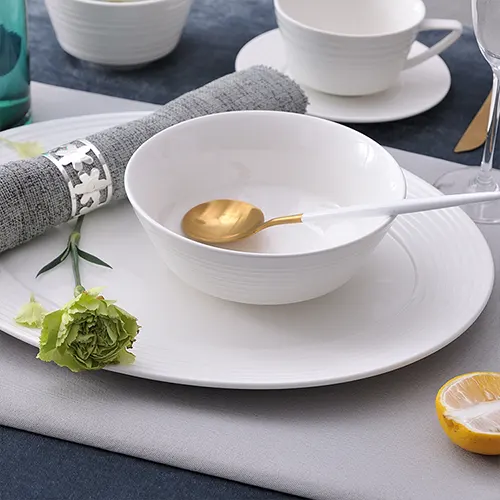
As tigelas de arroz são projetadas especificamente para servir pratos à base de arroz, comumente encontrado em várias cozinhas ao redor do mundo. Essas tigelas possuem características de design distintas que garantem uma experiência gastronômica agradável e prática ao consumir arroz.
Características do projeto:
- Tamanho: As tigelas de arroz são tipicamente menores e mais compactas em comparação com outras tigelas. O tamanho menor permite o controle de porção apropriado e incentiva o prazer de arroz como prato ou prato principal sem sobrecarregar o prato.
- Profundidade: As tigelas de arroz são rasas em profundidade em comparação com as tigelas de sopa ou macarrão. Este design permite fácil acesso ao arroz com pauzinhos ou uma colher, facilitar a porção conveniente e comer.
- Material: Tigelas de arroz são comumente feitas de cerâmica, porcelana, ou outros materiais de retenção de calor. Esses materiais são escolhidos por sua capacidade de reter com eficiência o calor, Mantendo o arroz quente durante toda a refeição.
A tigela de arroz ideal deve ter uma capacidade moderada, permitindo uma porção suficiente de arroz enquanto promove o controle de porções. Uma profundidade que é superficial o suficiente para facilitar o acesso fácil ao arroz é preferido. Além disso, O material deve reter o calor bem para manter o calor do arroz, fornecendo um cenário visualmente atraente para o prato.
E. Tigelas de mistura

As tigelas de mistura servem a um propósito crucial nas cozinhas de hotéis e restaurantes, fornecendo uma solução prática e eficiente para preparação e mistura de alimentos. Eles são projetados com recursos específicos para facilitar a mistura, mexendo, e combinar ingredientes. Vamos explorar o objetivo e a funcionalidade de misturar tigelas, junto com o tamanho ideal, material, e recursos para mistura e preparação eficientes.
Propósito e funcionalidade:
- Ingredientes de mistura: As tigelas de mistura oferecem um amplo espaço para combinar ingredientes, Seja está mexendo juntos uma massa, jogando uma salada, ou marinar carne. Seu design profundo e amplo impede o derramamento e facilita a mistura completa.
- Estabilidade: As tigelas de mistura são frequentemente projetadas com uma base plana e não deslizante para garantir a estabilidade durante a mistura ou mistura vigorosa. Isso impede a tigela de deslizar ou derrubar, fornecendo um espaço de trabalho seguro e eficiente.
- Fácil derramamento: Muitas tigelas de mistura apresentam um bico ou lábio de derramamento, permitindo uma transferência conveniente e sem bagunça de misturas, líquidos, ou batedores em assadeiras, moldes, ou outros contêineres.
A tigela ideal deve ser selecionada com base nas necessidades específicas da cozinha. Deve ter um tamanho adequado, ser feito de um material durável, e inclui recursos que aumentam a eficiência dos processos de mistura e preparação de alimentos em um hotel ou cozinha de restaurantes.
Para concluir, A seleção adequada de tigelas com base em suas funções é essencial nas configurações de hotel e restaurante. Tigelas projetadas para necessidades culinárias específicas garantem uma experiência gastronômica eficiente e visualmente atraente. Ao entender as diferentes funções das tigelas e escolher as apropriadas para cada propósito, Hotéis e restaurantes podem elevar a experiência gastronômica para seus convidados, deixando uma impressão duradoura e garantindo sua satisfação com as ofertas culinárias.
Conclusão
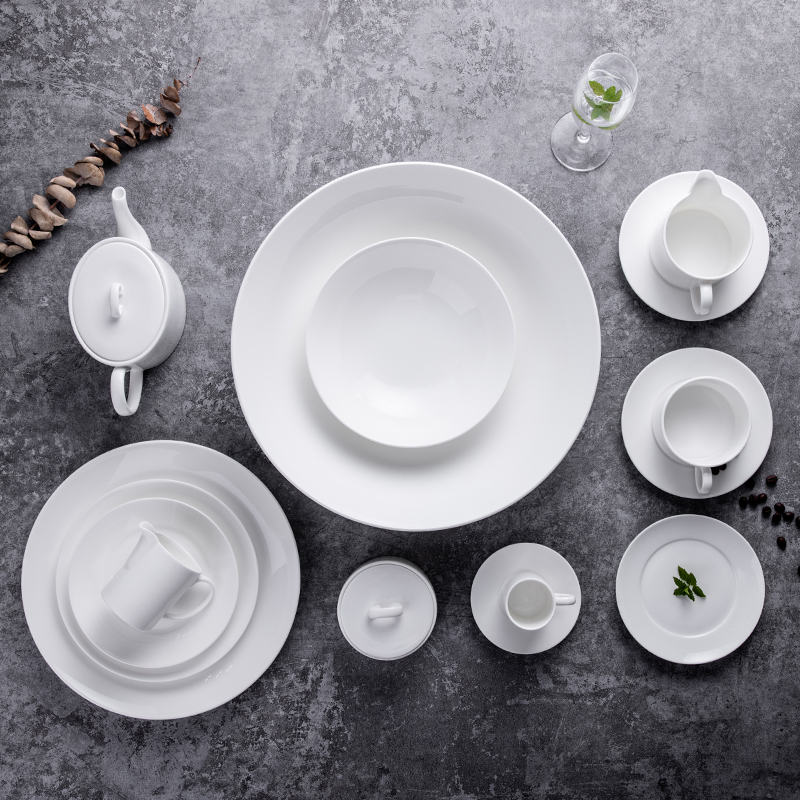
Para concluir, A seleção adequada de tigelas em ambientes de hotel e restaurante é essencial para criar uma apresentação atraente, Manter a temperatura alimentar, e aprimorando a experiência gastronômica geral para os hóspedes.
Prestando atenção a fatores como tamanho, forma, material, e recursos de design Garante que a tigela complemente o prato pretendido e aumente os elementos visuais e funcionais da experiência culinária. Reconhecendo o significado de escolher as tigelas certas, Os estabelecimentos de hospitalidade podem elevar a experiência gastronômica e deixar uma impressão duradoura em seus convidados.

